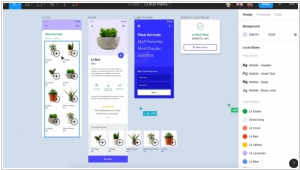Balsamiq vs Figma
September 19, 2023 | Author: Adam Levine
15
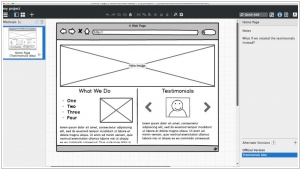
Mockups really shines during the early stages of designing a new interface. Mockups offers the same speed and rough feel as sketching with pencil, with the advantage of the digital medium: drag & drop to resize and rearrange elements, make changes without starting over, and your work is clear enough that you'll make sense of them later.
Balsamiq and Figma are both popular design tools that serve different purposes in the field of user interface (UI) and user experience (UX) design. Balsamiq is known for its simplicity and rapid wireframing capabilities, allowing designers to quickly sketch out ideas and concepts with its library of pre-built UI elements. On the other hand, Figma is a more comprehensive design tool that offers a broader range of features, including prototyping, collaborative design, and developer handoff. Figma's cloud-based platform enables real-time collaboration among team members and provides a seamless workflow for design iteration and feedback. While Balsamiq is ideal for initial ideation and low-fidelity wireframes, Figma is better suited for end-to-end design processes and collaboration within design teams.
See also: Top 10 Online Design software
See also: Top 10 Online Design software
Balsamiq vs Figma in our news:
2023. Adobe and Figma end $20B acquisition plans after regulatory headwinds in Europe
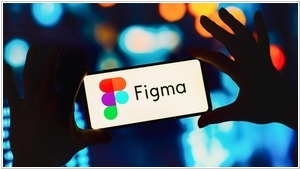
Adobe's $20 billion acquisition of rival Figma has officially collapsed, as the companies cited regulatory challenges in Europe as the decisive factor leading to the abandonment of the deal. Initially revealed in September of the previous year, the significant size of the transaction and the elimination of one of Adobe's key competitors made it susceptible to regulatory scrutiny. Throughout 2023, the U.S. Department of Justice (DOJ) closely examined the deal, although no formal lawsuit had been filed to prevent its completion. In a final effort to avoid legal action, Adobe and Figma engaged in discussions with the DOJ before the weekend, ultimately resulting in the termination of the acquisition plans.
2022. Adobe snaps up Figma for $20B

Adobe has recently announced its acquisition of Figma for a staggering $20 billion. Figma has gained popularity among individuals and teams due to its streamlined and modern cloud-based environment for design and prototyping. With approximately 4 million users to date, Figma has established itself as a prominent player in the industry. On the other hand, Adobe has been actively expanding its presence in the digital creation space through both internal developments and acquisitions. This expansion has taken Adobe beyond design and into marketing and other interconnected areas in the creation process. Design has always been at the core of Adobe's DNA, evident in their iconic products such as Photoshop, fonts, illustration, video, and 3D tools. The strategic vision behind the acquisition is to seamlessly integrate these Adobe products with Figma, positioning Figma as the native platform that unifies all of them. Adobe already had a similar offering in the form of AdobeXD, but the acquisition of Figma further strengthens its position in the design ecosystem.
2021. Figma introduces a whiteboard tool called FigJam
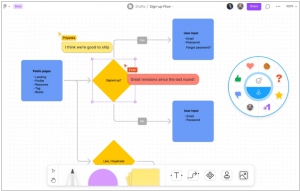
Figma, the online collaborative design service, has unveiled FigJam, a new whiteboarding tool aimed at fostering teamwork. FigJam goes beyond providing designers with a space to generate ideas collectively; it also enables nondesigners to actively participate in the brainstorming process. The tool offers a range of features, including sticky notes, emojis, drawing tools, shapes, pre-built lines and connectors, stamps, and cursor chats. Integration with Figma ensures smooth transitions as components or design objects created in FigJam can easily be transferred to Figma. Additionally, Figma is introducing voice chat functionality across all its products. This allows users collaborating on designs in Figma or engaging in brainstorming sessions in FigJam to communicate via audio without the need for separate Zoom or Google Meet calls—simply toggling on chat in Figma facilitates seamless audio communication.
2020. Design platform Figma raises $50 million
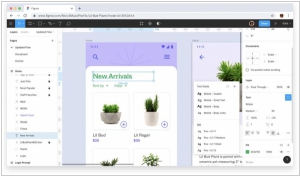
Figma, the design platform renowned for its collaborative and cloud-based approach, has recently concluded a successful Series D financing round, raising $50 million. After nearly six years of development in stealth mode, Figma was launched in 2015 with the vision of creating a collaborative design tool that functions similarly to Google Docs. Since its inception, Figma has continued to enhance its platform, focusing on expanding accessibility and usability for individual designers, small firms, and large enterprise companies. Additionally, the company introduced an educational platform called Community, empowering designers to share their work and enabling users to "remix" designs or explore them layer by layer.
2019. Online design tool Figma gets new enterprise collaboration features
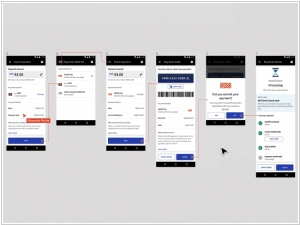
Figma, the web-based design and prototyping tool aiming to provide an alternative to similar tools like Adobe, is introducing a range of new features today to enhance collaboration across teams within large organizations. Known as Figma Organization, this feature set represents the company's first enterprise-grade service, incorporating controls and security tools that are essential for large companies. One notable addition for designers is the introduction of organization-wide design systems. While Figma already offered tools for creating design systems, this enterprise version simplifies the process of sharing libraries and fonts among teams. This ensures consistent application of styles across a company's products and services.
2018. Balsamiq Mockups improves navigation, offline access
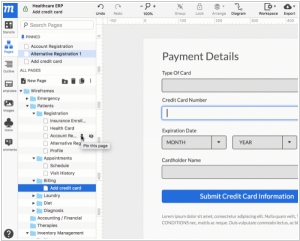
The prototyping tool Balsamiq Mockups has introduced a range of new features that enhance navigation, editing, and exporting capabilities with Moqups. Notably, there are two significant changes to Pages: Pinned Pages and Page Thumbnails. Pinned pages enable users to prioritize their most frequently accessed pages by pinning them to the top of the Pages Panel. Furthermore, the export function now has its dedicated button and introduces a valuable new option: the ability to export an offline version of the Viewer. With the Export to HTML feature, users can download a fully interactive prototype that can be viewed without an internet connection, making it suitable for environments with more restricted access, such as behind-the-firewall intranet servers. Additionally, Balsamiq Mockups incorporates several other improvements, including smarter forms, color replacement on pages, enhanced SVG support, image cropping, and a blur filter. These updates collectively enhance the user experience and expand the tool's capabilities.

